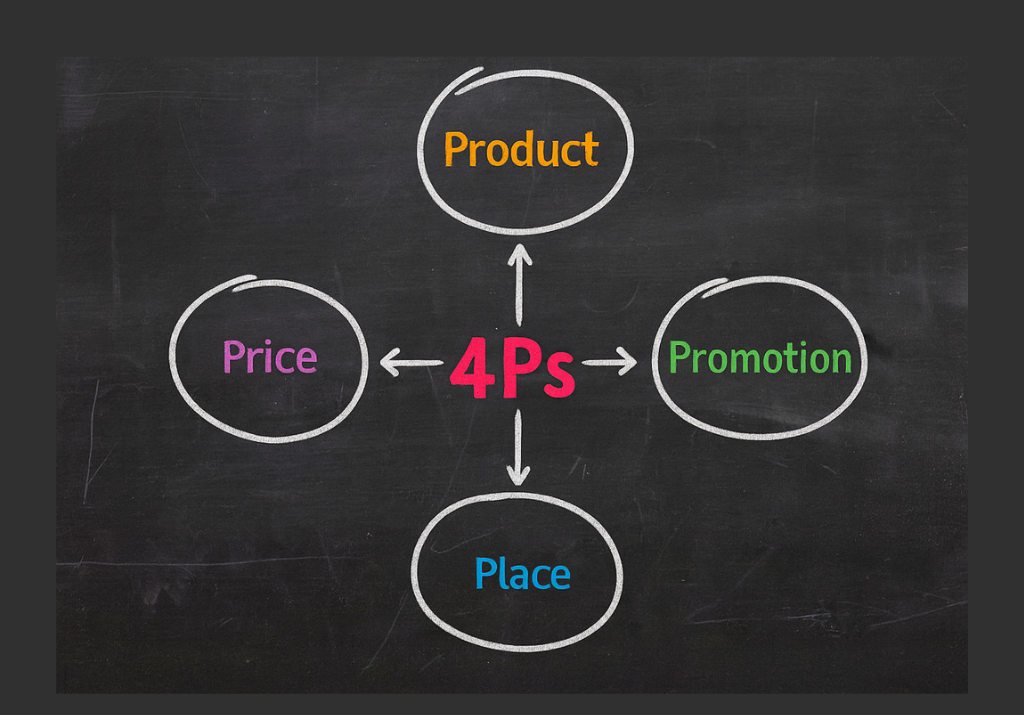B2B marketing today is not what it used to be. The environment has become faster, smarter, and more competitive. Buyers now research independently, compare multiple solutions, and expect immediate clarity from brands. Most studies show that over 70% of B2B buyers complete a major part of their research before speaking to a salesperson, and more than half of all B2B decisions begin with an online search.
At the same time, digital noise is increasing. A large share of marketers say that AI-generated content has made differentiation harder, and many buyers admit that they trust brands more when messaging is clear, human, and backed by real value. With automation rising and digital channels becoming crowded, businesses must be more strategic in how they position and promote themselves.
Interestingly, despite all these changes, one simple framework still offers the direction today’s marketers need: the 4 P’s of B2B marketing. While the 4 P’s, Product, Price, Place, and Promotion, originated in the consumer world, they have evolved significantly for B2B needs. Today, they form the backbone of strategy, helping businesses improve visibility, build trust, and create stronger lead pipelines.
This guide explains how the 4 P’s of b2b work, why they still matter, and how using them well can transform your entire marketing approach.
1. What Works in Today’s B2B Marketing
B2B buying behaviour has changed because the buyer has changed. Instead of waiting for a salesperson to explain things, modern buyers prefer to explore solutions on their own. They want clarity, proof, and personalized guidance, not pushy tactics.
These are a few important changes that are redefining B2B marketing today:
Clarity Over Complexity
B2B brands often fall into the trap of sounding overly technical. But buyers don’t want complicated messaging, they want simple, direct explanations. Companies that clearly communicate what they do and how they add value are the ones that stand out.
A Trust-First Decision Process
B2B purchases usually involve long-term commitments, budgets, and multiple stakeholders. This makes trust more important than ever. Proof-based communication, such as case studies, testimonials, and expert insights, plays a major role in winning confidence.
A Digital-First, Self-Guided Buyer Journey
Before speaking to anyone from your sales team, buyers typically:
- Read blogs and reports
- Search for solutions on Google
- Compare alternatives
- Check reviews on platforms like G2 or Clutch
This makes your content quality, website experience, and online visibility extremely important.
The Rise of Consultative Messaging
Buyers want to be educated, not sold to. Brands that openly share knowledge, offer insights, and guide prospects make stronger impressions. Content truly becomes your salesperson.
Data-Driven Personalization
Tools like CRMs, intent data platforms, and automation tools help marketers understand what each prospect wants. This enables more tailored conversations and increases conversion chances.
2. The 4 P’s of B2B Marketing Explained
The foundation of B2B marketing still revolves around Product, Price, Place, and Promotion. What has changed is how each one works in a digital and data-driven world.
Product: Your Complete Business Solution
In B2B, your product isn’t just what you sell, it’s the entire experience you offer. This includes:
- Technology or service
- Onboarding process
- Customer support
- Training and resources
- Integrations and scalability
Buyers want to understand the full solution, not just features. They want to see how your offering fits into their business and how it solves a real problem.
When presenting your product, make sure to highlight:
The Problem You Solve
Start by addressing the pain point or challenge. Buyers want to know whether your solution truly understands their industry and needs.
The Outcomes You Deliver
Features matter, but results matter more. Instead of saying “our tool automates workflows,” say “our automation reduces manual work by 40%, saving 10–15 hours weekly.”
Your Differentiation
Why should buyers choose you over competitors? This can include:
- Industry-specific expertise
- Faster implementation
- A more user-friendly interface
- Stronger support
- Better customization options
- Unique methodologies
Scalability and Long-Term Value
B2B buyers want solutions that grow with them. Demonstrate how your product adapts to different business sizes, usage levels, or industries.
A strong product narrative makes it easier for buyers to understand your value, and this strengthens your chances of generating high-quality leads.
Price: Communicating Value, Not Just Cost
Pricing in B2B is never just a number, it’s a negotiation between value, perceived impact, and investment confidence. Buyers need to feel that what they’re paying for will deliver returns.
How B2B pricing works today:
Value-Based Pricing (Short Explanation)
Modern B2B buyers don’t look for the cheapest product, they look for the one that delivers the strongest ROI. That’s why businesses use tools like ROI calculators, performance comparisons, benchmarks, and quantified case studies to prove value. This helps buyers justify the purchase confidently within their organization.
Flexible Pricing Models (Short Explanation)
Different businesses have different needs, so flexible pricing makes adoption easier. Models such as subscriptions, per-user plans, tiered options, usage-based billing, and enterprise pricing ensure companies of all sizes can choose a plan that fits their requirements.
Pricing Transparency (Short Explanation)
Hidden costs create hesitation. Buyers prefer a simple and clear explanation of what’s included, what’s optional, and what may add to the price. Transparent pricing builds trust and speeds up the decision-making process.
Place: Being Present Where Your Buyers Are Looking
In B2B, “place” is not a physical location, it’s your digital presence and where your buyers research, compare, and connect.
Your goal is to appear in the right channels, at the right time, with the right message.
Here’s how to strengthen your “Place” strategy:
Website and SEO:
- Ensure your website is fast, clear, and optimized.
- Publish SEO-friendly blogs and resources.
- Make it easy for buyers to understand your offering.
LinkedIn Presence:
- Share consistent, valuable content.
- Engage in conversations and industry discussions.
- Build trust through thought leadership posts.
Review Platforms:
- Maintain profiles on G2, Capterra, and Clutch.
- Collect authentic reviews.
- Showcase ratings to influence buyers’ shortlisting decisions.
Webinars and Online Events:
- Host educational sessions.
- Invite industry experts.
- Build credibility through shared insights.
Email Marketing:
- Use targeted campaigns.
- Send newsletters, updates, and nurturing sequences.
- Keep leads engaged throughout the buying journey.
Your presence across these touchpoints ensures you remain visible, discoverable, and credible.
Promotion: Educating, Guiding & Building Trust
Promotion is not about aggressive selling , it is about meaningful communication and trust-building. B2B buyers prefer brands that inform, guide, and support their decision-making.
These tactics are currently the most effective for promotion:
Content Marketing
- Publish blogs, guides, and reports.
- Share actionable insights that solve real problems.
- Use content to position yourself as an expert.
Search Engine Optimization (SEO)
- Target relevant keywords.
- Optimize every piece of content.
- Increase visibility among active buyers.
Paid Advertising
- Use Google and LinkedIn ads for targeted campaigns.
- Promote high-value assets like webinars and ebooks.
- Retarget website visitors to boost conversions.
Account-Based Marketing (ABM)
- Personalize outreach for high-value accounts.
- Create tailored email and ad sequences.
- Strengthen long-term relationships through relevance.
Social Proof
- Share case studies and testimonials.
- Highlight success stories with real numbers.
- Promote awards, certifications, and industry recognitions.
Promotion in B2B builds authority. When buyers trust your knowledge, they trust your solution.
3. Using the 4 P’s to Generate High-Quality B2B Leads
When combined, the 4 P’s of b2b offer a full framework for better lead generation.
This is how all four elements connect:
- A strong Product narrative attracts the right buyers.
- A value-based Price builds confidence and reduces hesitation.
- A strategic Place presence helps buyers find you easily.
- Trust-building Promotion nurtures leads throughout the journey.
This alignment improves overall visibility and credibility. It also shortens the sales cycle, increases conversions, and filters out low-quality leads. With consistent messaging across all four areas, your marketing becomes clearer, and your brand becomes more trustworthy.
Conclusion
The B2B marketing landscape continues to evolve, but the core principles remain the same. The 4 P’s of b2b still offer one of the most effective frameworks for building a strong, organized, and high-performing marketing strategy.
By improving your product story, communicating value through thoughtful pricing, strengthening your presence across digital channels, and promoting through education and credibility, you create a solid foundation for consistent growth.
Whether you’re a new business or an established brand, aligning your strategy around the 4 P’s helps you build meaningful connections and generate quality leads that convert.
I hope you find the above content helpful. For more such informative content, please visit MarketCode.
FAQs:
1. What are the 4 P’s of B2B marketing?
The 4 P’s Product, Price, Place, and Promotion, are a framework that helps businesses plan, position, and market their offerings effectively.
2. Why are the 4 P’s important for B2B companies?
They help B2B brands build clear strategies, understand customer needs, and create offerings that stand out in competitive markets.
3. How is the 4 P’s model used in B2B marketing?
Companies use it to refine product value, set the right pricing, choose the best distribution channels, and plan promotional activities.
4. Are the 4 P’s still relevant in modern marketing?
Yes. Even with digital transformation, the 4 P’s remain a strong foundation for building customer-focused and effective B2B strategies.
5. How do the 4 P’s work together?
Each P supports the others. A well-designed product needs the right price, distribution method, and promotional strategy to succeed.




